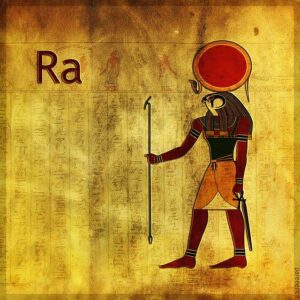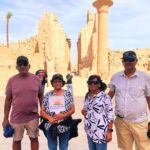The Egyptian Sun GodNyt: Unveiling Ra’s Legacy
The concept of the sun as a life-giving force has been a central theme in cultures across the world, but few civilizations have celebrated this celestial body with as much reverence and complexity as the ancient Egyptians. Their pantheon of deities is intricate and rich, but none holds as much significance as Ra, the Egyptian sun god. The keyword “Egyptian sun god nyt” has sparked curiosity and a quest for understanding this pivotal figure’s cultural, spiritual, and historical importance.
Ra: The Radiant Deity

Ra, often depicted with a falcon head crowned by a solar disc, represents the sun’s power, warmth, and light. As the Egyptian sun god nyt, Ra symbolizes creation, renewal, and cosmic order, holding the title of the most revered deity in ancient Egyptian religion. His importance goes beyond mythology, reflecting the Egyptians’ profound connection to the natural and spiritual world.
Origins and Evolution of Ra’s Worship
he worship of Ra can be traced back to Egypt’s Old Kingdom (circa 2686–2181 BCE). During this time, Ra’s prominence grew, and by the Fifth Dynasty, he became an integral part of the state religion. Pharaohs aligned themselves with Ra, claiming to be his direct descendants and ruling by divine right. The Egyptian sun god nyt has become a symbol of this divine-human connection, often explored in modern narratives.
Ra’s identity evolved over time, merging with other deities to form composite gods like Amun-Ra, emphasizing his creative powers, and Ra-Horakhty, focusing on his role as the rising sun. These variations reflect the adaptability of his worship, cementing his place as a cornerstone of Egyptian spirituality.
The Mythological Journey of Ra
In Egyptian cosmology, Ra’s journey across the sky symbolized the cycle of life. Each day, Ra sailed through the heavens on his solar barque, bringing light and life to the world. At night, he descended into the underworld (Duat) to battle chaos and darkness, represented by the serpent Apophis. This nightly struggle underscored themes of renewal and victory, as Ra emerged victorious each morning.
Significance in Art and Architecture
The reverence for Ra is evident in ancient Egyptian art and architecture. Temples dedicated to him, such as the Sun Temples at Abu Ghurab, were monumental structures designed to honor his energy and vitality. The obelisk, a prominent feature of these temples, symbolized a ray of sunlight frozen in stone—a testament to Ra’s omnipresence.
In many tombs and papyri, the depiction of Ra’s solar journey emphasizes his central role in the afterlife. These artistic representations served both as a religious reminder and as an attempt to align human life with the divine order governed by Ra.
Ra’s Role in Society and Culture
Ra wasn’t just a religious figure; he was a cultural and political symbol. Pharaohs invoked his name to legitimize their reign, reinforcing their connection to the divine. Ra’s imagery permeated daily life, from amulets and jewelry to prayers and hymns, highlighting his widespread influence.
Ra in the Context of “Egyptian Sun God Nyt”
In modern times, the fascination with Ra continues, often reignited by popular culture, academic discourse, and media references. The phrase “Egyptian sun god nyt” reflects a renewed interest, possibly linked to articles and features exploring Ra’s legacy. The New York Times (NYT), for instance, has published insightful pieces discussing ancient Egyptian beliefs and their relevance today. Whether addressing archaeological discoveries or cultural reinterpretations, these discussions help demystify the enduring allure of Ra.
Contemporary Reflections on Ra’s Influence
Even today, Ra’s legacy is visible in art, literature, and spirituality. His symbolism has transcended time, appearing in modern media as a representation of power, rebirth, and enlightenment. Ra inspires discussions on sustainability and solar energy, drawing parallels between ancient reverence for the sun and contemporary efforts to harness its power for the betterment of humanity.
Why Ra’s Story Matters Today
Understanding Ra and his role as the Egyptian sun god is more than an academic exercise; it offers insights into humanity’s enduring relationship with nature and the cosmos. His mythology highlights the cyclical nature of life and the eternal struggle between order and chaos—concepts that resonate universally.
For readers curious about ancient Egypt, diving into Ra’s mythology provides a gateway to understanding a civilization that laid the groundwork for much of our modern worldview. As the keyword “Egyptian sun god nyt” gains traction, it underscores the ongoing quest to connect with our shared heritage and unravel the mysteries of a culture that still captivates us.
The Enduring Mystery of Ra
The story of Ra, the Egyptian sun god, continues to shine brightly, reflecting humanity’s timeless fascination with the sun and its power. Through the lens of “Egyptian sun god nyt,” we not only revisit the past but also find inspiration for the future. Ra’s light may have originated in ancient Egypt, but its brilliance reaches far beyond, illuminating pathways of discovery, innovation, and spiritual growth.
By exploring the legacy of Ra, we celebrate not just a deity but a profound cultural force that continues to enlighten and inspire across millennia.
FAQs About the Egyptian Sun God
If you’re curious about the Egyptian sun god and want quick, easy-to-understand answers, this FAQ section is here to help! Let’s explore the fascinating world of ancient Egyptian mythology.
1. Who is the Egyptian god of the sun?
The Egyptian god of the sun is Ra. He was one of the most important deities in ancient Egyptian mythology, representing life, creation, and the cycles of the day. Ra was believed to travel across the sky in a solar barque during the day and descend into the underworld at night to battle chaos.
2. Which Egyptian sun god starts with a?
The Egyptian sun god that starts with “A” is Amun-Ra. This composite deity combines Amun, the creator god, with Ra, the sun god. Amun-Ra symbolizes the merging of creation and light, making him a powerful figure in ancient Egyptian religion.
3. Who is the sun god of Egypt Ra?
Ra is the sun god of Egypt and one of the most revered deities in their pantheon. Often depicted with a falcon head and a solar disc, Ra embodies the sun’s energy, warmth, and light. He was believed to create life and maintain cosmic order, making him central to Egyptian spirituality.
4. Who is the Egyptian sun god with hands?
The Egyptian sun god often depicted with outstretched hands is Aten. Aten is represented as a sun disc with rays ending in hands, symbolizing the life-giving power of the sun. This form of worship became prominent during Pharaoh Akhenaten’s reign, emphasizing Aten as the sole god.
Why These Questions Matter
Understanding these details helps unravel the rich tapestry of Egyptian mythology. Figures like Ra, Amun-Ra, and Aten reveal how the ancient Egyptians viewed the sun as a source of life and a symbol of divine power. Each name and depiction carries deep cultural significance, reflecting their worldview and spiritual beliefs.




